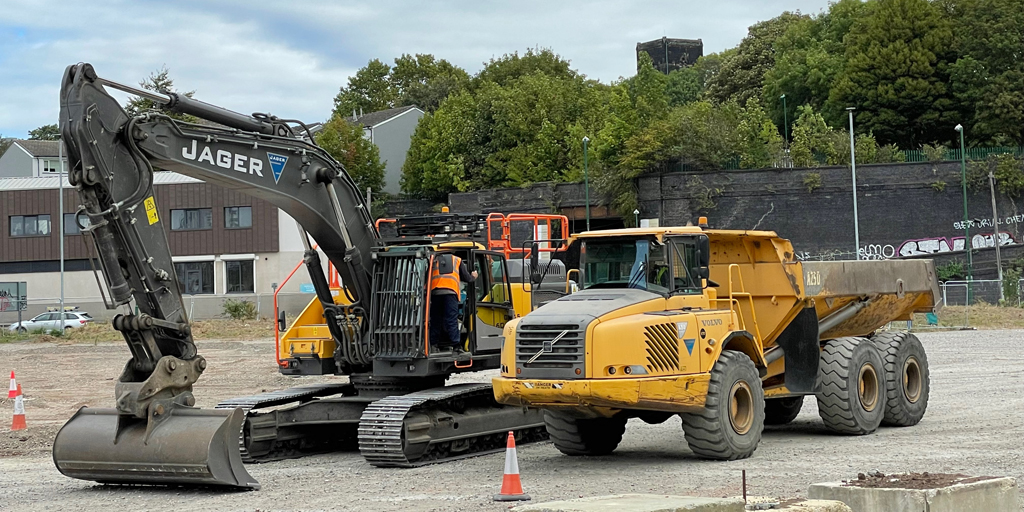Sweating the big stuff
- September 25, 2021
- Steve Rogerson
Steve Rogerson looks at the advice being given to heavy equipment manufacturers thinking about using IoT technology.
We hear a lot about how the IoT can impinge on our daily lives, with smart home devices, autonomous cars, self-service supermarkets, health monitoring and so on. But one area that is taking this technology very seriously indeed is industrial.

I was reminded of that this month while listening to the first day of the IoT M2M Council’s IoT Days Fall event in which Syed Zaeem Hosain, chief technology officer at Aeris Communications, looked at the options available for manufacturers of heavy equipment.
He was talking about those companies that make the type of equipment you find in factories, transportation and construction sites; the big stuff, where interestingly knowing its location is less important than information about how it is performing. Typically, a lot of this equipment is hard to lose; it won’t fall down the back of the sofa and can’t be slipped into someone’s pocket. True, there are thieves out there and equipment can go missing on its way to a remote location, but generally location is not a big issue.
That was evident from the results of a survey Hosain presented that showed just over half saw location data as key compared with nearly ninety per cent interested in the performance data, saying these were mostly or extremely important.
These people are looking for telematics data to help them with predictive maintenance and the like. And most choose cellular as their communications medium followed by wifi a close second and satellite a distant third.
Hosain was not surprised by these results. Cellular has an extensive global footprint. LTE is available in most places and there all fallbacks to 3G and 2G in many places, which is more than enough for these types of applications. Cellular IoT technologies such as LTE-M and NB-IoT have good throughput and are reliable. On top of that, it is possible to have the system set up to connect with multiple operators in case there are problems in some locations.
“That is important for IoT,” said Hosain.
Also, in urban locations, 5G is becoming more common and companies are looking at using it for video monitoring and real-time remote control of equipment.
Wifi is an obvious choice too, especially for in-factory applications as there is a good chance the network already exists. This is well capable of being used for monitoring equipment for signs of failure as well as producing up-to-date data on how the factory is doing. The only snag is that it can have problems if there is too much metal around, but good planning can usually get round that.
Satellite technology comes into its own for remote outdoor locations or even at sea, places where there is unlikely to be good if any cellular service. On the downside, it can be a more expensive options and the antennas tend to be on the large side.
Hosain also mentioned other technologies such as LoRa that was very useful for private networks, though it has a lower speed than wifi, and don’t forget the old favourite Ethernet; a wired network could be just the thing when a factory has just too many obstructions for wireless to handle.
Whichever of these connectivity routes you choose, Hosain had some good advice – make sure it is rugged. The equipment may have to deal with temperature extremes, shock and even water. And do not forget vibration.
“Vibration can over time cause you more of a problem than anything else,” said Hosain.
Another issue is that many companies do not have the skills in house to deploy an IoT network, and may need to bring in outside help; Hosain was quick to point out his own company’s expertise in this area but said there were others. It is also worth getting the assistance as early in the planning stage as possible as that will make it easier to reach a good outcome.
As well as the technology aspects, an experienced partner can advise on how to justify the cost and calculate a return on investment by showing you the benefits you can achieve.
“You should build your business case before you start your deployment,” said Hosain. This should reduce problems later on when you need to grow the network.
And the big one to remember is the goal is not to gather data for the sake of it, but to use those data to improve the operations of your company. So think from the start how you are going to use the data and the types of analysis you will need to perform to turn the data into something useful.
These days, sadly, you cannot talk about gathering data without also thinking about privacy and security, and the IoT is seen as the next big target for hackers.
“There are criminals out there,” said Hosain. “Physical security has to go hand in hand with data security. Information has value and you need to protect it securely.”
So, a lot to think about, but don’t let that put you off going down the IoT road. Perhaps out of all Hosain’s advice, the key one is not to do it alone. There are experts out there; give them a call.




